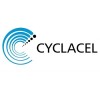
Efficacy Study of Oral Sapacitabine to Treat Acute Myeloid Leukemia in Elderly Patients
Acute Myeloid LeukemiaThe objective is to treat elderly AML and MDS patients with sapacitabine.

Treosulfan-based Conditioning for Transplantation in AML/MDS
Acute Myeloid LeukemiaMyelodysplastic SyndromeThe study hypotheses is that the introduction of dose escalated treosulfan, in substitution to busulfan, will reduce toxicity after allogeneic transplantation while improving myeloablation and and disease control in patients with AML and MDS not eligible for standard transplantation.

Phase II Study of Clofarabine in Adult Patients With Refractory or Relapsed Acute Myelogenous Leukemia...
Acute Myelogenous LeukemiaClofarabine (injection) is approved by the Food and Drug Administration (FDA) for the treatment of pediatric patients 1 to 21 years old with relapsed acute lymphoblastic leukemia (ALL) who have had at least 2 prior treatment regimens. This is a single arm, open-label, Phase II study of CLOFARABINE in adult patients with refractory or relapsed acute myelogenous leukemia (AML). Qualified patients must be refractory to one or two induction regimens, or have relapsed < one year from the date of confirmation of the initial complete remission (CR). There will be two phases in this study - an Induction phase and a Consolidation phase.

Trial Comparing Pegfilgrastim With Filgrastim as an Adjunct to Chemotherapy for Acute Myeloid Leukaemia...
Myeloid LeukemiaThe purpose of this study is to determine if a single dose of pegfilgrastim is able to reduce the time of severe neutropenia in patients receiving induction and consolidation myelosuppressive chemotherapy for de novo acute myeloid leukemia similar to filgrastim.

GilteRInf 2022 Study (Gilteritinib Related Infections)
Acute Myeloid LeukemiaThe study is observational, retrospective-prospective, multicenter "real-life" study involving 26 centers belonging to the SEIFEM group. The goal of this study is to obtain a real-life experience in the management and outcome of infectious issues of patients with relapsed/resistant acute myeloid leukemia who receive Gilteritinib therapy, given that recent approval of this drug.

Innate T Cells and TKI Discontinuation
Chronic Myeloid LeukemiaAfter more than a decade of treating chronic myeloid leukemia (CML) with tyrosine kinase inhibitors (TKI), the discontinuation of treatment represents the expected new revolution. The investigators has recently discovered a new innate CD8+ T population in healthy subjects, the Eomes+ KIR+ CD8+ T population, with anti-tumor properties. Remarkably, these cells are numerically and functionally deficient in patients at diagnosis and then restored in patients in major molecular remission (MMR) on TKI. Our work performed in a retrospective pilot study interestingly shows a very significant increase in the proportion of CD8+ Eomes+ KIR+ T cells within total T cells in patients with prolonged success in stopping their ITK (≥ 2 years).Thus, the investigators postulate that CD8+ Eomes+ KIR+ T cells are a predictive signature of TKI arrest success in CML. The investigators will rely on a prospective translational study of this cell contingent during treatment cessation.

The Life After Stopping Tyrosine Kinase Inhibitors Study (The LAST Study)
LeukemiaMyeloid1 moreThis is a non-randomized, prospective, single-group longitudinal study. The purpose of this study is to improve the decision making process used by physicians and patients when they are considering stopping their Tyrosine Kinase Inhibitor (TKI) medication.

Nonmyeloablative Allogeneic Transplant
Aplastic AnemiaParoxysmal Nocturnal Hemoglobinuria16 moreAllogeneic transplant from a matched sibling for the treatment of a variety of illnesses including bone marrow failure states, leukemias, myelodysplastic or myeloproliferative syndromes, lymphoma, or myeloma using a nonmyeloablative preparative regimen.

Ruxolitinib in Combination With Nilotinib in Chronic Myeloid Leukemia (CML) Patients
Chronic Phase Chronic Myeloid LeukemiaThis study is designed to determine the maximal tolerated dose of Ruxolitinib in combination with nilotinib in patients with chronic myeloid leukemia (CML).

Reduction of Cord Blood Transplantation Toxicity in Patients With Acute Myeloid Leukemia
Acute Myeloid LeukemiaMulticentric evaluation of the reduction of unrelated cord blood transplantation (UCBT) toxicity by using reduced intensity conditioning (RIC) in patients with acute myeloid leukaemia.UCBT related mortality and morbidity were limiting factors for the development of this procedure in adults. Non myeloablative conditioning regimen showed promising results and prospective evaluation has to be developed to confirm these retrospective data.
